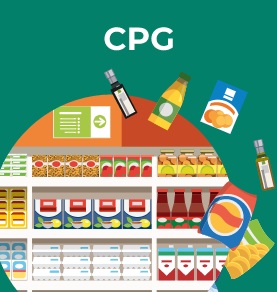Will the Ready-to-Eat Category Expand its Footprint in India

By Manish aggarwal , Director, Bikano
28 Sep 2022 | 6 min read
With the busy lifestyles of the millennial workforce, the increase in gross family income, and with nuclear families and work-from-home becoming the norm, consumers seeking convenient food options, the ready-to-eat (RTE) and ready-to-cook (RTC) categories have been seeing a lot of action. The mounting inclination towards convenience food in the working population is being directed by the particularly grueling work-from-home schedules in the last two years, increasing disposable income in the hands of the middle-class strata, the myriad of new product launches, and the intensifying reach of retail markets.
Time is a tight and western culture where everything is fast and easy is uber cool. So, how bright is the future of the Ready-to-Cook and Ready-to-Eat segment in India given this scenario?
Market Classification
Broadly, this market cleaves into two segments- frozen and shelf-stable categories. According to Technavio’s latest market segmentation analysis, this category is expected to grow in India by $751.43 million from 2021 to 2026. The growth momentum of the market will accelerate at a CAGR of 18.63 percent during this period, within a fragmented market having several players.
Furthermore, the frozen food division will make significant strides and add a whole gamut such as meat and poultry, snacks, ready meals, vegetables, and fruits to their offerings. It is important to remember though that the frozen category is a tough one, given the numerous dynamics at stake, such as the requirement of temperature-controlled environments from the production time to reaching the consumers’ plate.
The shelf-stable division inclusive of instant mixes that transform into cakes, bread, noodles, etc. with the addition of minimal common ingredients and heat will continue to grow, albeit at a slower rate.
The Current Demand
The demand for RTE food products skyrocketed during the COVID-19 pandemic, and the industry became one of the few to witness a surge in demand during the pandemic. With countries in lockdown and most people working from home, RTC products were flying off the shelves over the last few months. No wonder then that the RTE market is also projected to register a CAGR of 4.3 percent during 2021-2026 globally.
What we see now, is a budding demand for quick food that’s also high in nutritional value that will continue to affect the real growth of the RTE category. The most popular RTE products in India include preparations of paneer, chana masala, rajma masala, pav bhaji, etc. And while the rising demand for RTE has attracted the interest of many companies to enter this space, which is likely to contribute to the market growth in the coming years, for the demand to sustain consumers need proof of quality nutrition from brands, and also flavors that are more familiar to the Indian palate.
Future of this Market in India
For one thing, this category commands constant innovation and additions at planned intervals and studies are highlighting how the right size pack containing niche, regional options of Ready-to-Eat meals, and flavors are more and more likely to find favor with the contemporary Indian consumers of the future. For example, small, single-use packs of upma are great at targeting the young, entry-level office- or college-going consumer while medium packs of various kinds of masala, parathas, fries, etc. are what compact, nuclear families are more likely to purchase, with the sliding price range of the different size packs becoming a key sale determiner.
Other than the growing requirement for a variety of product offerings and pack sizes, sustainable packaging is also another prominent need of the hour. This factor is directly caused by the growing consumer sensitivities towards environmentally friendly packaging. If the package the food comes in is not recyclable, reusable, or compostable, the consumer may just select another brand on the sheer need to support eco-friendliness. Even as companies delve into this new-fangled idea, the basic requirement of RTE packages, i.e. to maintain the quality and flavor of the meals till the time of consumption cannot change or be defaulted on. With all these additional, dynamic parameters, companies still have to be able to maintain the economies of price per pack as well.
The Indian consumer is evolving as is their demand for more niche regional flavored, Ready-to-Eat meals that are packed in a clean, green manner. If all these factors can be fulfilled by the industry, we should be prepared to witness a huge, growing demand potential.
With the busy lifestyles of the millennial workforce, the increase in gross family income, and with nuclear families and work-from-home becoming the norm, consumers seeking convenient food options, the ready-to-eat (RTE) and ready-to-cook (RTC) categories have been seeing a lot of action. The mounting inclination towards convenience food in the working population is being directed by the particularly grueling work-from-home schedules in the last two years, increasing disposable income in the hands of the middle-class strata, the myriad of new product launches, and the intensifying reach of retail markets.
Time is a tight and western culture where everything is fast and easy is uber cool. So, how bright is the future of the Ready-to-Cook and Ready-to-Eat segment in India given this scenario?











